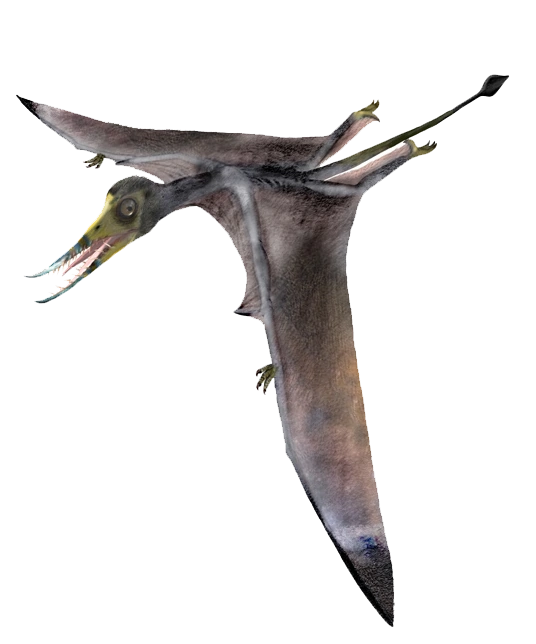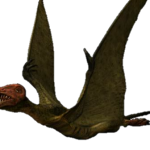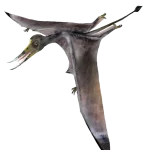“If it has a pointy beak and it is a big as a plane it is Pteranodon. If it is smaller and it tiny teeth in its beak then it is Rahmphorhynchus. Remember that you little Jurassic geek.”
— Cabot Finch
Rhamphorhynchus is a genus of long-tailed pterosaurs from the Late Jurassic period of southern Germany. Like all early pterosaurs it had a long tail that ended in a characteristic diamond-shaped vane. Its teeth were needle-like, adapted to catching fish. The only species was Rhamphorhynchus muensteri.
Less specialized than contemporary, short-tailed pterodactyloid pterosaurs such as Pterodactylus, it had a long tail, stiffened with ligaments, which ended in a characteristic diamond-shaped vane. The jaws of Rhamphorhynchus housed needle-like teeth, which were angled forward, with a curved, sharp, beak-like tip lacking teeth, indicating a diet mainly of fish; indeed, fish and cephalopod remains are frequently found in Rhamphorhynchus stomachal contents, as well as coprolites.
Although fragmentary fossil remains possibly belonging to Rhamphorhynchus have been found in England, Tanzania, and Spain, the best-preserved specimens come from the Solnhofen limestone of Bavaria, Germany. Many of these fossils preserve not only the bones but impressions of soft tissues, such as wing membranes. Scattered teeth believed to belong to Rhamphorhynchus have been found in Portugal as well.
Jurassic World Dino Escape Wild Pack Rhamphorhynchus DNA Scan Code

Name Meaning
Diet
Height
Wingspan
Weight
Beak snout
Carnivorous 🥩
1.26 meters (4.1 fee4t)
1.81 meters (5.9 feet)
5-10 lbs



